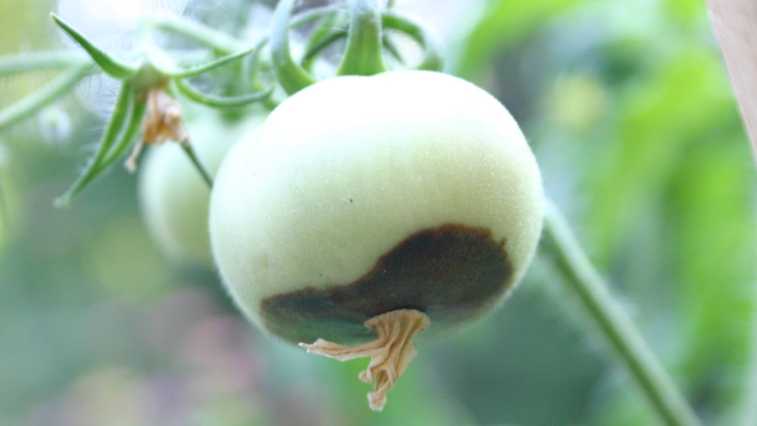Battling Blossom-End Rot in Tomatoes
 Vegetable growers can attest to the disappointment of seeing a beautiful tomato ripening on a vine, only to discover that the fruit has dark, sunken pits at the blossom end of the fruit. Called blossom-end rot (BER), this physiological disorder is prevalent in fruit and vegetable crops, including tomatoes, and can cause severe economic losses.
Vegetable growers can attest to the disappointment of seeing a beautiful tomato ripening on a vine, only to discover that the fruit has dark, sunken pits at the blossom end of the fruit. Called blossom-end rot (BER), this physiological disorder is prevalent in fruit and vegetable crops, including tomatoes, and can cause severe economic losses.
Through a $475,000 grant from the U.S. Department of Agriculture’s National Institute of Food and Agriculture (USDA-NIFA), University of Georgia (UGA) researchers are looking for the genetic and developmental factors of BER, with goals of investigating causal mechanisms and developing prevention and mitigation strategies for the disorder.
Led by Savithri Nambeesan, an assistant research scientist specializing in ripening and postharvest physiology in the UGA Department of Horticulture at the College of Agricultural and Environmental Sciences (CAES), the study will compare the genetic traits of tomato lines that are susceptible and resistant to BER through genetic mapping to try to identify the regions in the genome that cause BER. It will also examine developmental and molecular contributors to the disorder.
“If we can find the factors that lead to BER, we can use that information to tailor management practices to minimize the disorder,” says Nambeesan, who is working on the project with horticulture professor and plant geneticist Esther van der Knaap, who has done extensive work on tracing tomato genomes.
The disorder, which manifests in the first few weeks of growth after tomato flowers are pollinated, is influenced by genetic, developmental, and environmental factors, so the study will combine molecular and developmental approaches to understand potential causes.
Read more here.









